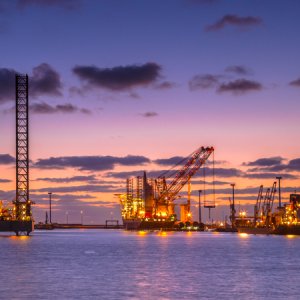Opportunities for Mexican Companies in Round One

STORY INLINE POST
Q: What would be the best case scenario for the role of domestic companies as future operators?
A: Mexico has very good companies that are concentrated on providing services to large oil companies. We now want to start a program that fosters the development of these companies. In our model, mature fields will be a point of entry where companies can develop their capabilities until they are ready to operate larger onshore fields. The next step is to go offshore, and eventually we will help them to create partnerships that will allow national operators to work in deepwater in the Gulf of Mexico. A major fund managed by the Ministry of Economy has been created to achieve these goals.
Q: How are you planning to use future licensing rounds to allow Mexican companies to make this natural progression?
A: The law allows us to provide information to the industry and the market about what is going to happen in the next five years. In the summer of 2015, we will publish prospective information about the next five years of bidding rounds and how these will be structured to create a steady ecosystem. By signaling where the government wants to go, international companies will have strong incentives to establish a permanent presence in Mexico, while Mexican companies will be able to plan ahead and develop the right capabilities to eventually operate more complex fields.
Q: Experienced Mexican service providers and newly created companies with financial strength want to become operators. What distinct roles do you see these types of companies playing?
A: We need both types. Due to the low oil price, the entire industry is experiencing financial restrictions, and many companies will need a financial partner to enter into different projects. Proposals will be stronger if backed up by a good financial partner. Mexico has already seen good examples of national and international companies working together. We have had a very positive experience in the petrochemical area, where the international company Braskem partnered up with a smaller local player, Grupo Idesa, to gain expertise on how to work in Mexico. We hope to see this example reproduced in the upstream market in the future.
Q: How has Mexico’s exploration and production outlook changed as a result of the unexpected drop in PEMEX’s production over the last year?
A: Mexico has very attractive geology so PEMEX’s production drop has not affected Round One. All kinds of companies are expressing their interest and that outlook will not change for the next few years. Having an integrated production cost of below US$20 in most of our fields means we can achieve the production goals established in the Energy Reform. We aim to increase production by 500,000b/d over the current production in the country. However, that goal is separate from events happening within PEMEX. The company has its own dynamics and its production should increase once farm-outs get started and its new partners bring in new technologies and finances. The current drop is a short-term phenomenon due to one model ending and a new model starting. PEMEX’s goal is to create value, so we need to encourage the NOC to carry out more profitable activities. Mexico will see a lot of companies working in midstream and downstream, so PEMEX does not need to do everything by itself anymore. As a result, PEMEX can allocate its resources to more productive areas, like E&P. That could put PEMEX back on track to produce 2.5 million b/d again.
Q: How would you rate the competitiveness of the blocks that are included in Round One, compared to what is available around the world?
A: The blocks on offer are very competitive. In the North Sea, companies are being offered the same blocks that they have been offered for many years. In Colombia, a bid was recently launched but companies preferred to wait for Mexico’s Round One. The US is launching some deepwater bids near the border with Mexico but our bids are more attractive. Our shallow water blocks are around 200- 400km2, whereas the US blocks are 25km2 on average. To create any scale in the US, a company would have to bid for many of these blocks and try to build a hub by joining blocks, and partner up with other companies. In Mexico, these large blocks can stand alone from a financial or a production perspective. The number of companies that are paying to access the Data Room and enter the prequalification stage shows we are doing something right






















